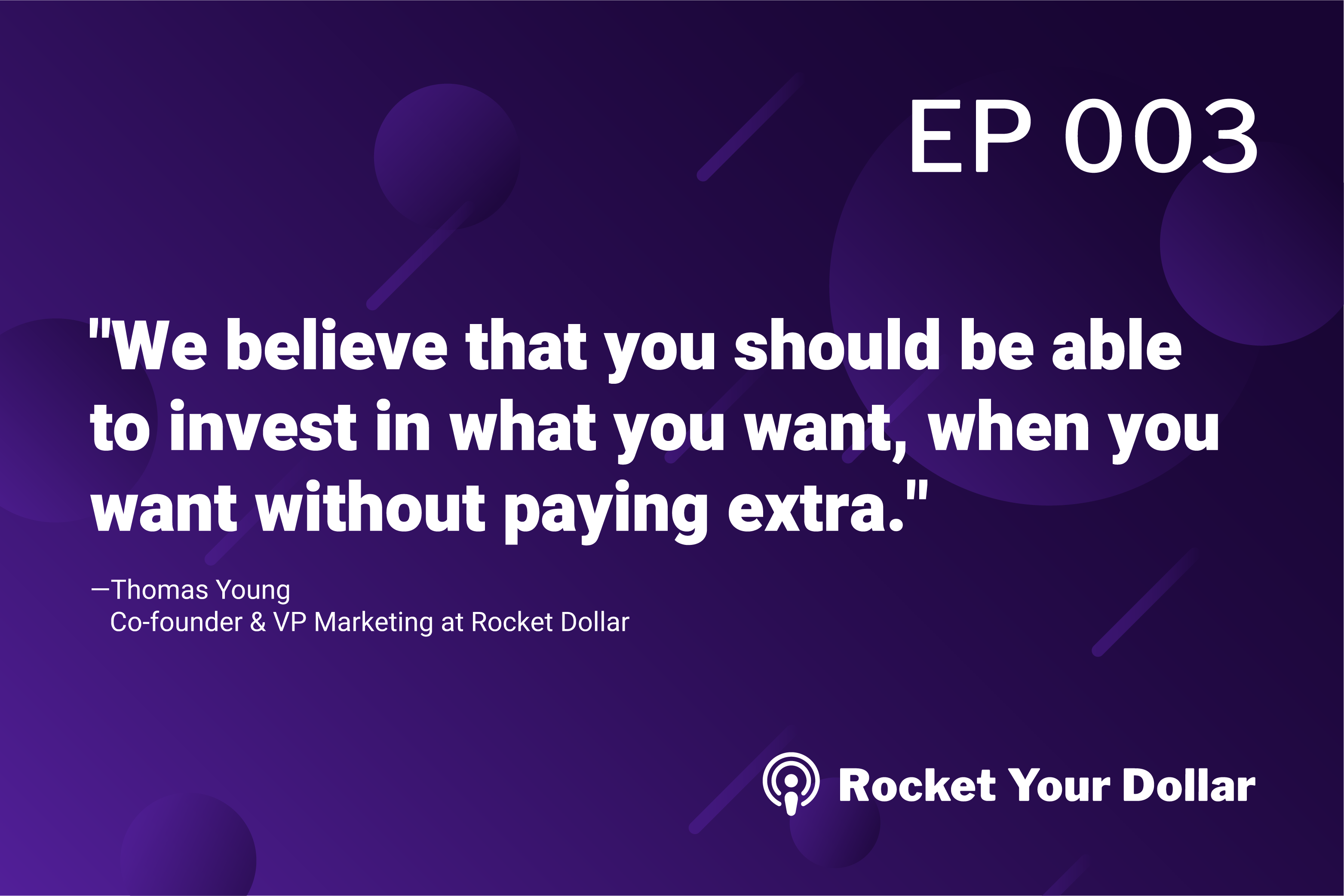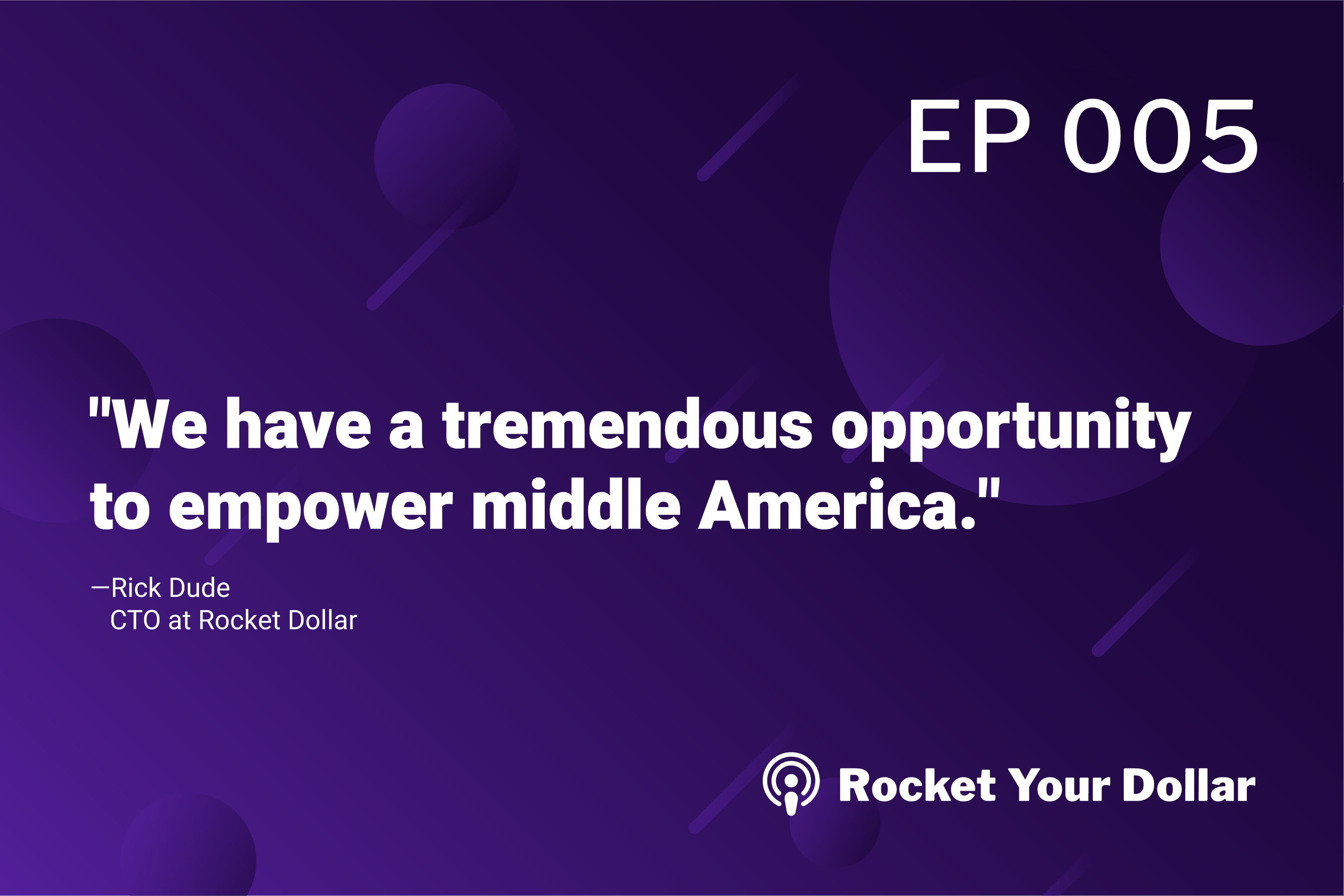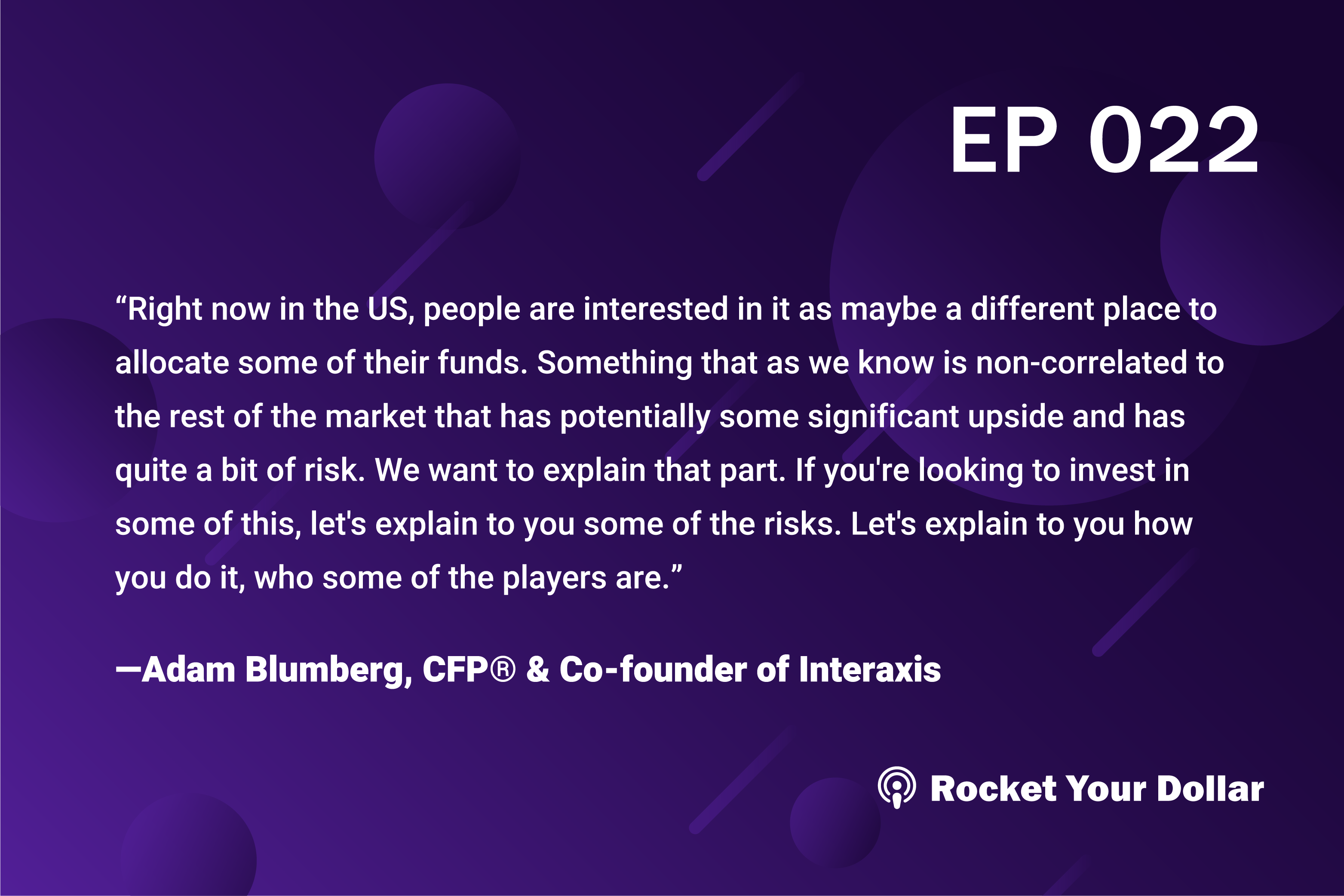
Transcription:
Thomas Young:
Hi, everyone. Thanks for being back on the show. Today, I’m excited to have John Nance with us. John is the current president and chief investment officer at Deal Box, Inc. Deal Box is a fintech merchant bank and capital markets consulting firm that specializes in utilizing revolutionary blockchain technologies to create more efficient ways for entrepreneurs and businesses to market their offerings and raise capital for their growth initiatives.
In addition to its business consulting services, Deal Box operates an institutional-grade marketplace and platform for investors to conduct due diligence and invest in the companies it consults. John, thanks for being here today.
John Nance:
I appreciate you guys having me. A pleasure to be here.
Thomas Young:
Absolutely. I’m curious. What I just read was a bit of a mouthful. I’d like to hear from you directly what it is that Deal Box specializes in and what you guys do.
John Nance:
No, yeah, I’d be happy to answer that. Let me back up on this, Tom, because I want to say this correctly here. I’ll start at the top.
Let’s go back a couple of years and talk about how investment platforms came to be and where they are today. The first case of crowdfunding was back in 2011, believe it or not. It wasn’t that long ago, a British rock band went out to raise some capital for a tour that they were going to do, so they promoted this offering online and raised a couple of million bucks to go do their roadshow.
The US government effectively said that it was an illegal offering and there was a whole bunch of regulatory fallout from it. That was the genesis for what became the JOBS Act in 2012 under the Obama administration, which made it illegal at this point to raise capital online through general solicitation using SEC exemptions to Regulation D and the like.
As a result, over the last nine years, what’s been happening is the online investing marketplace has been growing and evolving and coming to a point in which we’re now starting to utilize all of the technologies that have advanced in the last nine years to better source capital, better allocate capital, and have a better investor experience for those businesses.
Deal Box is really the culmination of about 10 years of thinking through what the future of crowdfunding investing online is really going to look like. We take a really deep approach when we conduct these things and when we bring clients onto the Deal Box platform, it starts with the iterative process with our analyst team.
When a client comes to Deal Box to raise capital, you’ll be ported over to our analyst team and they’ll spend about four to eight weeks with our clients setting up what we call professional-grade data rooms. These are lists of documents, sometimes in the 60-to-80 document range in which at the end of this process, these entrepreneurs effectively have a data room that looks similar to what you would expect from a public company.
We’re collecting data sets and information and diligence on these businesses that have previously been inaccessible and not necessarily centralized when it comes to the entrepreneurs being able to showcase their offerings and their businesses through online channels. That’s really where we started and where we’re at today. We’ll spend some more time talking about the technology, but that’s essentially how we became what we are today.
Thomas Young:
I love that approach because we take Rocket Dollar, for example. We went out and raised money in a very traditional way at the beginning via angel groups and small seed institutional investors, but there was no real discipline that was expected of us from our investors, right? People that are familiar with this space and have invested in startups before, they get it. It’s much more based on personal relationships.
What I love about crowdfunding specifically is that there are some criteria and there are some due diligence things in some exercises, if you will, that entrepreneurs have to go through to make sure that their company is ready to go through a crowdfunding raise. It’s not easy. I mean, we did it and we’re live on Republic right now, which is a different platform, but there were some real things that we had to pull together that we didn’t necessarily have together before. It’s not easy. I love that you guys take that approach where you help the entrepreneur develop this data room for them to be able to go execute on a raise.
John Nance:
Yeah, and you just nailed it exactly from your personal experience, right? This idea that “Okay, we want to go raise money online through a platform. Great. We’ve got a good business plan, here’s my deck. We think we’re ready to go raise capital. Let’s go talk to one of these platforms.”
What winds up happening, depending on the sophistication of that platform, is there’ll be a long checklist of items of things that you’re going to need to provide. 98% of the time we see that the businesses are not in a position to be able to be listed on that platform right away. Then they go back internally and say, “Oh, my gosh. We have all of this extra documentation and data that we have to put together and we didn’t even know we needed X, Y, Z.”
At Deal Box, over the last 16 years, our team of analysts and consultants have packaged up north of 400 private placements in our tenure. We have the ability that some of the other platforms necessarily might not have to bring this institutional quality of data and diligence to the packaging project that we are then able to push out through more traditional channels.
What we’re doing is we’re filling the gap between what crowdfunding is today and what the traditional broker-dealer and investment banking world looks like when you’re raising institutional capital.
Thomas Young:
Right. That makes perfect sense. I’m curious. Of all the companies that come to work with you guys, how many of them are a fit for crowdfunding and how many of them just have a lot more work to do? I mean, because we see a lot of companies on crowdfunding platforms, but these are pretty vetted. I mean, platforms, they have an interest in promoting the best, but what’s the acceptance rate from a company that comes to you guys that you guys then go through the process and decide that it’s appropriate for them to raise capital via crowdfunding?
John Nance:
That’s a great question. Just to answer high-level first, I would say that the acceptance rate probably falls somewhere between like 40 and 50% of the projects that we see are a good fit.
Then going beyond that, it comes down to what the longterm growth goals for that business are and what the full capital formation process looks like. Oftentimes, in the crowdfunding world, you’ll see a business that wants to go raise X amount of dollars and that’s their objective and that’s what you see. Then from there, they’re just going to go execute on the objectives that they laid out in the presentation.
We take a much more holistic approach at this where we just don’t start at seed capital alone, we’ll go from seed all the way to Series A, B, and then actually build exit plans and liquidity event plans for our businesses. We take a much more holistic approach when it comes to this.
That’s why the acceptance rate is where it is, because a lot of companies might be good fits for seed capital, but are you a good fit to get acquired one day or do a public offering or something of that nature? When we take this holistic approach, we’re not just looking for companies who want to just go raise some X amount of capital on a seed or Series A round. We’re looking for companies that are viable investment targets over the long run.
Thomas Young:
Right. I think that that makes perfect sense because as you mentioned when crowdfunding started gaining any traction, it was really about just getting the seed round funded or raising a little bit of money to get a product off the ground. It was great, but, as the space matures, right, I mean, investors need liquidity. This space has to return capital, otherwise, it’s just, it looks like charity to companies, right?
I love the approach that you guys take where you do look at, ultimately, the liquidity event, which means that investors get their money out and hopefully some multiple on it, which I think a lot of platforms don’t do, but I feel like the space is going that way and it’s maturing. I mean, at the end of the day we’re still at the very beginning stages of it.
John Nance:
Yeah. I want to make sure we come back to that idea of liquidity and the actual investment horizon and returns and stuff later in our discussion here, but we’ll get to that maybe when we talk about some of the blockchain stuff that we’re working on.
Thomas Young:
Right. Well, maybe that’s a great segue. I’m very curious as to how blockchain fits into all of this and know, the tokenization that you guys do, aside from the sort of consulting that you guys do for companies looking to raise it, how does it all fit together?
John Nance:
That’s a great question and so many amazing companies are doing a great job at trying to solve this question, but one of the things that we see is an overarching theme in conferences and podcasts and video recordings of such are really how has the tokenization of securities revolutionized the world of finance and crowdfunding.
It’s our view that there’s a couple of benefits to being able to issue securities on the blockchain. It comes down to a couple of main points which are radical transparency, these ideas of open access investing, how we can create entrepreneurship and economic growth and revitalize that as well as the proper understanding of valuation and pricing of these assets.
What I’ll do is I’ll spend a little time talking about what the actual benefits of issuing securities on the blockchain are. Today in the private markets, if you were to participate in a Series A of a traditional company and going to raise something in a private channel, for example, when I complete your term sheet as an investor, I received that term sheet countersigned as a paper version of my stock certificate, if you will, that says “John owns X percent of company Y.” That’s all I’m going to be able to do with that piece of paper generally until there’s a liquidity event for that business.
Effectively, I’m just sitting on some type of cap table inside the company that I just invested in. When there’s a liquidity event who knows how long down the road, there’s a piece of paper that says “John owns this much of the businesses and is entitled to this much of the return from the liquidity event.”
Along that stage, that’s a multi-multi-year process. Generally, somewhere between seven and 12 years that you see in the traditional venture capital world and with private placement investing today. By issuing securities on the blockchain, effectively what you’re doing is creating an advanced mechanism for transferability and I want to spend a second talking about why I use the word “transferability” and not what you hear in the industry a lot, which is the word “liquidity.”
It’s important to understand the difference between the two of those because effectively, that blockchain mechanism for that security is just allowing for a more efficient means of transferability when it comes to cost administration and things of that nature, not necessarily liquidity.
This is one of those things where there’s a lot of other businesses in the industry that tout this idea of liquidity, but when you look at what the actual secondary liquidity is for markets in digital security, it’s quite low. There’s no, what we call in the traditional capital markets world, “market depth.” We’re still working to develop out these exchanges to have that depth, but the important thing to focus on is that transferability.
Say, for example, that I was going to sell a portion of my investment that I just made in this prior example into company Y over here. Well, even if I had an investor on the other side who says, “John, yeah, I’ll buy 50% of that investment from you, let’s pay for the deal,” and I say, “Okay, great,” we agree on a price.
Well, in the paper world today, that process can take anywhere from three to four months to handle that transfer of those securities. By issuing them on the blockchain, this transfer can take minutes, if not seconds. What we’re doing is just reducing the cost and increasing the efficiency of the transferability of securities in secondary markets. The benefits of that go way beyond just the investor and the purchaser of this particular security having a more efficient means of transferability. It applies to so many more great things, like entrepreneurship growth and the valuation and pricing of businesses and assets.
I mean, a great example of this would be the Uber IPO. They go raise private capital for 10 or 12 years or something like that and when they go to hit the market and the investment bankers do the underwriting, they come up with a valuation, I think it was something in the 70 million, right? 30 days later or less after that IPO, the valuation of that business effectively got cut in half.
Well, why’d that happened? It’s because the public markets have access to now review all of these documents in place, bids and offers on these securities to determine what they think the price of the business should be, what the valuation of that business should be.
What you have going on today in the private securities world is this situation in which private companies are raising venture capital or whatever type of capital they’re raising in almost a valuation shell game where all you want to do is make sure you have an up round. Then you look to have a liquidity event so the earliest investors can realize some liquidity. What happens to that investor group that participated in your last private round or the second to last private round? Well, they’re already losing money in the second year stock hits the public markets.
By having this increased transferability in these secondary markets for private company shares, we envision a world in which valuation is a lot more sound and sane throughout the entire capital formation process and growth of that business.
What you’re getting is a much more competent level of understanding about what the fair price of these businesses should be and that has a ton of additional benefits beyond that.
Thomas Young:
Right. That’s interesting. I mean, I guess the biggest example of a company raising rounds and trying to get to an IPO and then disastrously falling apart is WeWork, right? Their evaluation was based on the charisma of a founder, which is a terrible way to raise money, but a lot of people do it.
Then you get to a liquidity event where, yeah, I mean, anybody that invested may be passed the Series B or C is hurting because as you just said, the transparency once the security hits the public market is much higher, right? It’s not an old boys’ club or VC backroom deal, not backroom deal, you know what I mean, but it’s radical.
I’m curious, if an entrepreneur can go raise higher and higher rounds, why would they benefit from being with Deal Box or with someone that requires so much disclosure when they might be able to raise a ton of money without having to disclose too much of their business?
John Nance:
Really, what you’re talking about is such a small subset of businesses that go out and raise growth capital, or seed capital, for that matter. I mean, you’re talking about less than 1% of the companies that fit that description. I mean, if you were a former Fortune 500 founder and, let’s say, you’re Evan Spiegel from Snapchat, for example, and he leaves Snap to go start another business it’s easy for him to go raise capital, but if you’re just another professional in the space starting a business, you’re not going to be able to go that route. It just doesn’t work that way.
Thomas Young:
That makes perfect sense. We talked about what the entrepreneur and the company goes through to get on the Deal Box platform, but tell me about as an individual, as an investor, if I’m going on to the Deal Box platform to invest in a company, what am I going to see and what am I going to get from my investment if I’m used to receiving a safe or being in a convertible note if I’ve done deals on other more “traditional,” let’s call them, crowdfunding platforms?
John Nance:
Great. Yeah, that’s an excellent question. This is what we get most excited about when it comes to digital assets in the crowdfunding and private placement space. If you remember, earlier on, we discuss the difference between a paper share certificate and the transferability of these digital assets. What does that look like for the investor?
Well, once you decided that you’re going to invest in a particular company on the Deal Box platform, you’ll click into invest into that business and you’re redirected into the onboarding procedures as well as then the issuance procedures.
We’ve partnered with two of who we believe to be the best issuance and onboarding software for digital assets in the industry. Those are our partners over at Token IQ and Vertalo. Those two companies provide infrastructure and ecosystems in which the investor will be able to electronically fill out all of the necessary forms to subscribe to a particular offering, then be approved to receive and participate in that offering depending on the compliance and the regulations and the registrations that that company has filed its offering under.
Once that investor is approved to invest in that company, they’re going to be migrated over to a white-labeled version of the Vertalo software in which that investor is going to be able to view through Vertalo’s portal their digital assets for the particular companies that they’ve invested into on the Deal Box platform.
You can almost think of it as a digital asset brokerage window, similar to what you would see when you view your stock positions at a TD Ameritrade or Charles Schwab or something like that. Effectively, what you’re getting is a centralized point for you to be able to monitor, view, track, and maintain those digital assets.
Then a cool part beyond that is the idea of transferability and the secondary market exchange as I mentioned. As what we call “alternative trading systems” here in the United States build out the proper regulations and liquidity depth and all of those things that we’ve talked about, you’ll be able to directly lift that specific asset onto one of these exchanges and those investors through this portal with Vertalo and the particular ATS that that digital asset gets listed on be able to trade directly through those exchanges with that digital asset.
What you’re doing is you’re combining something like a Carta today who’s managing your cap tables and your investments for your private company shares and then an ATS similar to like what you see in the world of exchanges and be able to transact, view, display, and report on all of those assets that you own in the environment.
Thomas Young:
It’s almost like a mini IPO for a private company and the investor, it gives them maybe not immediate access to liquidity if they need it, but there is an avenue for them to transfer some of these assets into the other folks that are interested in creating a bit of liquidity for themselves should they need it, right?
John Nance:
Yeah, that’s exactly right. I just want to emphasize this idea of the transferability efficiency versus the liquidity again. We’re all going to be in a world in the future here where these markets develop and liquidity will grow, but the main point today is that should you need to and you could identify a purchaser, it would be very easy for you to transact in these things.
Again, we don’t want to overstate the value of where the industry is at today, but the beauty of the thing is that there are efficiency improvements and we are moving towards a situation in which all of these enhancements are going to be much broader and much deeper in the future. We’re starting here and it’s been a fun journey thus far and we’re just excited to see where it takes us all.
Thomas Young:
The question that just popped into my head is: When a company goes and raises money on Deal Box, I mean, for starters, do you have to be accredited to invest on the Deal Box platform?
John Nance:
It depends on the specific offering type that that company is raising. If you’re doing something like a regulation D 506(c), which is accredited investors only, that answer is yes, but certain exemptions allow you to do things in unaccredited versions, which are what we’ve seen in the regulation a market as well as a limit to the unaccredited investors that can be taken in under a reg D 506(b). That just depends on the type of offering that the issuer is going to be conducting. What you want to do if you’re debating investing in a particular company is figuring out what types of exemptions are they applying for and can you be accredited or unaccredited.
Thomas Young:
On the Deal Box platform, you guys have an avenue for accredited-only raises as well as different types where you can have crowdfunding, right, where I can go in as an unaccredited individual and invest? You guys have both sides, right?
John Nance:
Exactly, yeah. That’s very clearly displayed as soon as you select any of the companies that you’re looking at. It’ll state right at the top what the specific exemption being filed is and then whether it’s accepting accredited or unaccredited and how many slots are left.
Thomas Young:
That’s awesome, because there’s a lot of limits for crowdfunding and unaccredited people: how much a company can raise a year, what it can advertise, what it can’t advertise. The fact that you guys have both sides for someone that wants to take advantage of this, the technology that you guys are building, but it’s going to be a much larger raise, a company can now look at Deal Box as an attractive place to go raise that money.
John Nance:
That’s exactly it.
Thomas Young:
We’ve talked a little bit about what the entrepreneur sees. We’ve talked a little bit about what the investor sees. What are you guys working on right now that you’re excited about for a little bit longer term? I mean, where do you see this going and when will you guys go, “Man, we made it,” or, “This space is mature?” I mean, I’ll let you speak to it, but where does this space end?
John Nance:
Yeah, that’s quite a question. I guess I like to focus on two things, because I heard you ask, essentially, when do we consider a victory if you will, or that we’ve achieved our goals. Then the second question would be geared towards a little bit about why Deal Box is different than most of the traditional funding platforms out there. I’ll address both of those.
As far as a victory in the space would go. What we want to be able to see is a client of Deal Box who’s completed multiple raises, issued those digital securities have been listed on these alternative trading systems and that people are trading those digital assets daily.
That would be a win for us if as soon as just one of those companies hits. As soon as that’s the case, now we’ve got an actual use case inside the ecosystem here where we can start working on getting the rest of the companies on the platform to look just like that.
Extrapolating upon that, I would say that if 50-plus percent of our companies were in that scenario and were trading actively on these open exchanges, we’re now in a situation where we would consider everything that we’ve worked years to build is functioning exactly how we thought it was going to.
Now, the second piece is we’re trying to create something a little bit different than what you see in other crowdfunding platforms and digital securities platforms. That second component is taking more of a holistic integrated ecosystem approach with our clients on the platform.
A lot of the time, if you were to go raise capital for your business on another platform, their primary focus is making sure you get the money in the door and as soon as you do, wipe your hands clean, done deal, nice doing business with you.
We don’t think of it that way. We take a much more active investor approach with the companies we work with. One of the cool things that we do is look across the subset of all of our clients. As we get to know these people, we start to identify what businesses might be able to help other businesses inside the platform.
What we do, in effect, is allow these companies to cross-pollinate, talk to each other, engage each other for each other’s services, share partnerships, form alliances. All of these things are situations in which if you’re in a walled garden approach in another particular funding platform, you’re not really going to get any exposure to any of the other businesses and you might not even know that, hey, that deal that’s listed right underneath yours on that particular platform might be the company you’ve been looking to partner with for five years. You might not have any idea how to identify that.
One of the great things we do for our clients and our portfolio companies here on the platform is we create conference series where the founders and the teams of these businesses can get together in person and talk about all these mutual opportunities, which is something we don’t see in the space today.
What you’re getting when you join with Deal Box and what you’re getting as an investor in any company of Deal Box is this confidence that we’re not a walled garden and we’re not just looking to raise capital for a business. We’re looking to help grow that business. That’s the biggest difference. For us, that secondary component of what we consider a victory is really when the vast majority of all of the companies on the platform are working together in some capacity beyond their capital raises to grow their businesses together.
Thomas Young:
I love that and it is feasible because of the way that you guys go about your business, where you are a consulting firm. You’re really diving deep into these businesses to build the data room that you mentioned earlier, so you do intimately get to know these businesses in your day-to-day dealings, just getting them ready to be on the platform because you’re not just looking at their financials and checking off boxes, but you’re building the data room. You guys have, compared to a lot of other platforms, much more in-depth knowledge of your portfolio companies, if you will. I liked that you guys take that holistic approach to both your investors and your company.
John Nance:
Yeah, no, I appreciate that. That’s exactly the goal here.
Thomas Young:
John, here, just wrapping up, because we have so many different people that listen to this show and some are entrepreneurs, similar investors, some are both, if you’re a company or an investor that wants to get in touch with your team at Deal Box or with you, what’s the best way to open a channel of communication between them and you guys?
John Nance:
Oh, no, I appreciate that. Thanks, everybody, for listening as well. We’d be happy to talk to entrepreneurs and investors and further this discussion. We’ve got a lot more to say on the topic and a lot of really great materials that we can share and help you better understand what the environment looks like.
Again, like you just said, being that we’re consultants, we take a very agnostic approach when we begin discussions, either with investors or with potential clients on the platform. We don’t want to just come out into the world and just sell our services, right? We’re in a situation where I want to make sure the best thing happens for each investor and each particular client on the platform.
We’re happy to have discussions with anybody out there on the investment front and also on the client front. If you’re looking to raise capital for your business, you can go onto the Deal Box website and hit the Contact Us page and be directed to hello@dlbx.io and that’ll get inbounded to the team and we’ll get you in touch with the right person to do so.
Thomas Young:
Awesome. John, thank you so much for being on the show and I look forward to having you on again as the space matures and new things come to light and we have more to share. We’ll have you back on soon.
John Nance:
I appreciate the time. Again, thanks, everybody, for listening.
Thomas Young:
Thank you for listening to this episode of Rocket Your Dollar. If you enjoyed this episode, please subscribe and share the podcast with your friends. To learn more about self-directed investing or to get started with your account, please visit us rocketdollar.com. See you next week.

 The Rocket Your Dollar Podcast
:
March 18, 2020
The Rocket Your Dollar Podcast
:
March 18, 2020

.png)




